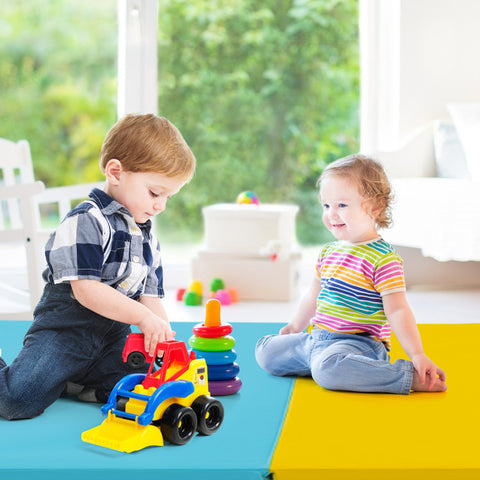News
Gymnastics Mats Guide 2025: Safety, Types, and Buying Considerations
Gymnastics is a sport that demands precision, flexibility, and control. While athletes dedicate countless hours to mastering skills, one essential piece of equipment often overlooked is the gymnastics mat. Whether for professional training centers, school programs, or home practice, the right mat ensures safety, boosts confidence, and enhances performance.
This comprehensive guide explains the importance of gymnastics mats, their different types, key features to consider, and professional recommendations for both athletes and parents.
Why Gymnastics Mats Are Essential
- Injury Prevention: Reduce the impact from falls, jumps, and landings.
- Confidence Building: A cushioned surface allows athletes to attempt new moves safely.
- Skill Development: Supports proper body alignment and technique.
- Versatility: Suitable for gymnastics, cheerleading, martial arts, yoga, and fitness training.
- Professional Standards: Compliant mats are required for competitive training and events.
Types of Gymnastics Mats
1. Folding Mats
- Best For: Beginners and home use.
- Features: Lightweight, portable, easy to store.
- Use Case: Cartwheels, handstands, basic tumbling.
2. Tumbling Mats
- Best For: Continuous floor routines and cheerleading.
- Features: Long, cushioned surface; may be inflatable or foam-based.
- Use Case: Tumbling passes, flips, dance practice.
3. Crash Mats
- Best For: Advanced gymnasts and high-impact training.
- Features: Extra thickness (up to 12 inches) for safe landings.
- Use Case: Vaulting, aerial skills, dismounts.
4. Incline (Wedge) Mats
- Best For: Beginners and skill progression.
- Features: Sloped design for rolls, transitions, and basic gymnastics shapes.
- Use Case: Teaching forward rolls, backbends, and body positioning.
5. Air Track Mats (Inflatable Mats)
- Best For: Athletes needing bounce and portability.
- Features: Inflatable, adjustable firmness, easy to transport.
- Use Case: Tumbling practice at home or outdoors.
Maintenance and Care Tips
- Clean regularly with mild soap and water.
- Avoid harsh chemicals that damage vinyl.
- Store mats in cool, dry places to prevent wear.
- For inflatable mats, maintain proper air pressure.
- Inspect regularly for tears, loose stitching, or surface cracks.
Professional Recommendations
- For Home Practice: Folding mats or small air tracks.
- For Schools & Training Centers: Durable tumbling and incline mats.
- For Advanced Training: Crash mats and professional-grade tumbling strips.
- For Versatile Use: Mats with Velcro connectors to expand floor space.
Conclusion
Gymnastics mats are not optional accessories; they are essential safety and training tools. From protecting athletes from injury to enhancing confidence and skill progression, the right mat can make a significant difference in training quality. Whether you are equipping a home gym, a school, or a professional facility, choosing the correct mat requires careful consideration of thickness, durability, size, and purpose.
Investing in a high-quality gymnastics mat means investing in both safety and performance.
Frequently Asked Questions (FAQs)
Q1. What’s the best gymnastics mat for beginners?
Folding mats or incline wedge mats are best, as they are safe, versatile, and easy to store.
Q2. Are inflatable mats safe for kids?
Yes, as long as they are properly inflated and used under supervision. They provide bounce and cushioning.
Q3. How thick should a crash mat be?
Crash mats generally range from 4 to 12 inches thick, with thicker options recommended for advanced landings.
Q4. Can gymnastics mats be used outdoors?
Yes, but avoid direct sunlight for extended periods, and ensure mats are stored indoors after use.
Q5. How often should gymnastics mats be replaced?
With proper care, mats last several years. Replace them if there are visible cracks, sagging foam, or damaged stitching.


